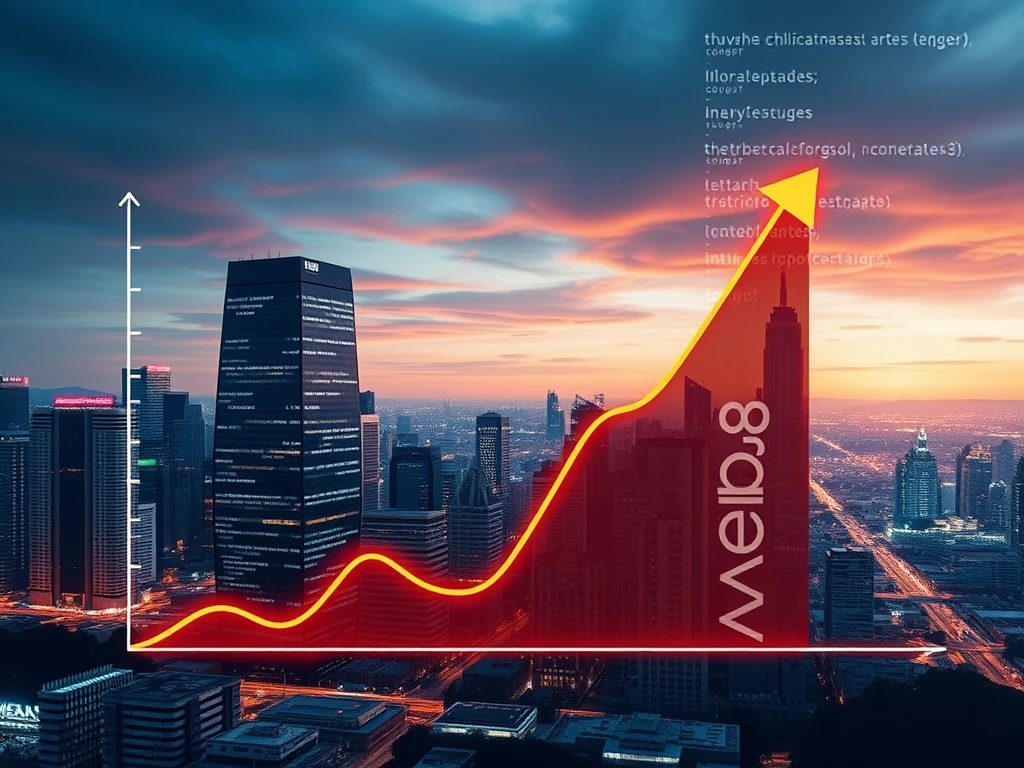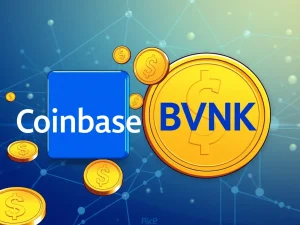Dramatic 40% Drop: Are Web3 Developers Losing Faith?

A chilling statistic has emerged from the heart of the Web3 world: active developers have decreased by almost 40% in just one year. This significant drop raises serious questions about the health and future direction of the decentralized web. Is this a temporary dip, or a sign of deeper issues within the crypto and blockchain space? Let’s delve into the numbers and explore what industry experts are saying about this concerning trend.
Alarming Decline: Web3 Active Developers See Significant Drop
Recent data from Artemis Terminal reveals a stark reality. On March 17, 2024, the number of weekly active developers contributing to open-source repositories in the crypto ecosystem stood at 12,380. Fast forward to March 16 of this year, and that number has shrunk to approximately 7,600. This represents a dramatic 38.6% decrease in Web3 active developers year-over-year. This metric, tracking developers across over 1,500 ecosystems, is a crucial indicator of the overall vitality of the Web3 space. A healthy developer community is vital, as their activity fuels innovation, protocol maintenance, and ultimately, the long-term sustainability of the entire ecosystem.
| Date | Weekly Active Developers |
|---|---|
| March 17, 2024 | 12,380 |
| March 16, 2025 | ~7,600 |
| Year-over-year Drop | 38.6% |
Source: Data from Artemis Terminal highlights the concerning trend of decreasing crypto developers.
Why the Exodus? Calls for Developer-Led Narratives
The significant drop in Web3 development activity has sparked concern and conversations within the crypto community. Many are questioning the reasons behind this decline and what steps can be taken to reverse the trend. Optimism contributor Binji Pande took to X to express his worries, stating that this drop is a clear warning sign. He believes that attention within the crypto space has shifted away from fundamental development, incentives for builders have diminished, and speculative trends are outpacing genuine utility. Pande points out a critical issue: there simply isn’t enough compelling activity happening on-chain to keep developers engaged. He argues that those focused on building solid foundations are not receiving the recognition they deserve, overshadowed by fleeting narratives and hype cycles.
Pande warns that this imbalance could lead to a collapse of the ecosystem. If there’s no real substance being built – no meaningful applications or use cases – then the promise of decentralization and distribution loses its appeal. He emphasizes the urgent need to support blockchain developers and encourage teams to focus on creating comprehensive, end-to-end products, rather than just churning out code in response to the latest market narrative. The call is clear: we need to shift from “narrative-led development” to “development-led narratives,” prioritizing genuine innovation and utility.
Memecoin Mania vs. Meaningful Web3 Development: A Misplaced Focus?
Developer Ben Ward echoed Pande’s sentiments, pointing a finger at market incentives and venture capital. He argues that for too long, protocols have been rewarded for superficial hype rather than robust, user-centric products. Ward makes a provocative statement: the only area in crypto currently demonstrating product-market fit is the “DeFi memecoin casino.” While acknowledging the popularity and profitability of memecoins, he stresses that this model is unsustainable and ultimately detracts from building truly useful applications that people genuinely want to use. The explosive growth of memecoins in early 2024, fueled by platforms like Pump.fun and even celebrity endorsements, highlights this skewed focus. The ease of launching these speculative tokens has, in some ways, overshadowed the harder, more crucial work of building functional and impactful Web3 development solutions.
Reigniting the Spark: Returning to Crypto’s Futuristic Vision
Pande concludes that while the crypto space has undeniably made progress, it may have veered off course. He urges the industry to rediscover its foundational principles and focus on making crypto feel “futuristic” once again. This requires a return to basics: building innovative, practical applications that demonstrate the real-world utility of blockchain technology. To attract and retain crypto developers, the industry needs to offer more than just speculative opportunities. It needs to provide meaningful challenges, supportive communities, and a clear path to building a truly decentralized and impactful future. The drop in active developers serves as a critical wake-up call. The Web3 space must re-prioritize genuine development and utility to reignite the passion and innovation that will drive its long-term success.
The industry stands at a crossroads. Will it continue down a path driven by fleeting hype and speculative trends, or will it pivot back to its core mission of building a truly decentralized and innovative future? The answer, in large part, lies in reigniting the passion and engagement of Web3 developers – the very architects of this digital frontier.







